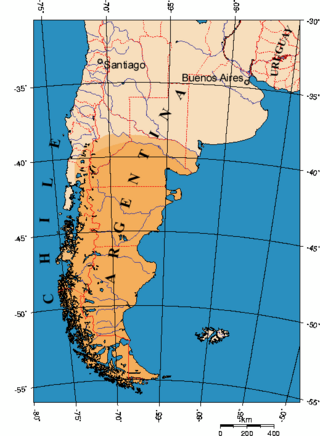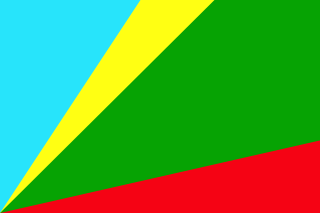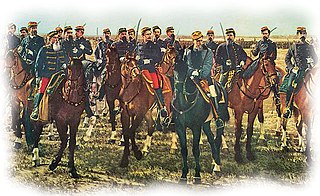
Patagonia refers to a geographical region that encompasses the southern end of South America, governed by Argentina and Chile. The region comprises the southern section of the Andes Mountains with lakes, fjords, temperate rainforests, and glaciers in the west and deserts, tablelands and steppes to the east. Patagonia is bounded by the Pacific Ocean on the west, the Atlantic Ocean to the east, and many bodies of water that connect them, such as the Strait of Magellan, the Beagle Channel, and the Drake Passage to the south.

The Huilliche[wi.ˈʝi.tʃe], Huiliche or Huilliche-Mapuche are the southern partiality of the Mapuche macroethnic group of Chile. Located in the Zona Sur, they inhabit both Futahuillimapu and, as the Cunco subgroup, the north half of Chiloé Island. The Huilliche are the principal indigenous people of those regions. According to Ricardo E. Latcham the term Huilliche started to be used in Spanish after the second founding of Valdivia in 1645, adopting the usage of the Mapuches of Araucanía for the southern Mapuche tribes. Huilliche means 'southerners' A genetic study showed significant affinities between Huilliches and indigenous peoples east of the Andes, which suggests but does not prove a partial origin in present-day Argentina.

The Mapuche are a group of indigenous inhabitants of south-central Chile and southwestern Argentina, including parts of Patagonia. The collective term refers to a wide-ranging ethnicity composed of various groups who shared a common social, religious, and economic structure, as well as a common linguistic heritage as Mapudungun speakers. Their homelands once extended from Aconcagua Valley to Chiloé Archipelago and later spread eastward to Puelmapu, a land comprising part of the Argentine pampa and Patagonia. Today the collective group makes up over 80% of the indigenous peoples in Chile, and about 9% of the total Chilean population. The Mapuche are particularly concentrated in the Araucanía region. Many have migrated from rural areas to the cities of Santiago and Buenos Aires for economic opportunities.

The Araucanía, La Araucanía Region is one of Chile's 16 first-order administrative divisions, and comprises two provinces: Malleco in the north and Cautín in the south. Its capital and largest city is Temuco; other important cities include Angol and Villarrica.

The Kingdom of Araucanía and Patagonia was an unrecognized state declared by two ordinances on November 17, 1860 and November 20, 1860 from Antoine de Tounens, a French lawyer and adventurer, who claimed that the regions of Araucanía and eastern Patagonia did not depend of any other states and proclaimed himself king of Araucanía and Patagonia. He had the support of some Mapuche lonkos around a small area in Araucanía, who thought they could help maintain independence from the Chilean and Argentinian governments.

Orélie-Antoine de Tounens was a French lawyer and adventurer who proclaimed by two decrees on November 17, 1860 and November 20, 1860 that Araucanía and Patagonia did not depend of any other states and that he himself was King of Araucanía and Patagonia. On January 5, 1862, he was arrested by the Chilean army and imprisoned. He was declared insane by the court of Santiago on September 2, 1862, and expelled to France on 28 October 28, 1862. He tried three further times to come back to Araucanía to regain his "kingdom", but without success, and he died in poverty on 17 September, 1878, in Tourtoirac, France.

A poncho is an outer garment designed to keep the body warm. A rain poncho is made from a watertight material designed to keep the body dry from the rain. Ponchos have been used by the Native American peoples of the Andes, Valley of Mexico and Patagonia since pre-Hispanic times, from places now under the territory of Mexico, Ecuador, Colombia, Chile, Bolivia, Peru, and Argentina and are now considered typical American garments.

The Conquest of the Desert was an Argentine military campaign directed mainly by General Julio Argentino Roca in the 1870s with the intention of establishing dominance over the Patagonian Desert, inhabited primarily by indigenous peoples. The Conquest of the Desert extended Argentine territories into Patagonia and ended Chilean expansion in the region.
Pierre Raymond is a social scientist who has been living in Colombia since 1979, and has been working on the country’s rural problems. He has undertaken in Colombia, his adopted country, several studies of rural economy, sociology and history. He also has been teaching at university subjects related to these topics to students in economics, rural development and forestry.

The Tehuelche people, also called the Aónikenk, are an indigenous people from eastern Patagonia in South America. In the 18th and 19th centuries the Tehuelche were influenced by Mapuche people, and many adopted a horseriding lifestyle. Once a nomadic people the lands of the Tehuelche were colonized in the 19th century by Argentina and Chile gradually disrupting their traditional economies. The establishment of large sheep farming estates in Patagonia was particularly detrimental to the Tehuelche. Contact with outsiders also brought in infectious diseases ushering deadly epidemics among Tehuelche tribes. Most existing members of the group currently reside the in cities and towns of Argentine Patagonia.
The Araucanization of Patagonia was the process of the expansion of Mapuche culture, influence, and its Mapudungun language from Araucanía across the Andes into the plains of Patagonia. Historians disagree over the time period during which the expansion took place, but estimate it occurred roughly between 1550 and 1850.
The Conquest of Chile is a period in Chilean historiography that starts with the arrival of Pedro de Valdivia to Chile in 1541 and ends with the death of Martín García Óñez de Loyola in the Battle of Curalaba in 1598, and the destruction of the Seven Cities in 1598–1604 in the Araucanía region.

Coordinadora Arauco-Malleco (CAM) is a radical, militant indigenous organization engaged in political violence in pursuit of attaining an autonomous Mapuche state in the territory they describe as Wallmapu.
The Mapuche conflict involves indigenous Mapuche communities located in Araucanía and nearby regions of Chile and Argentina. It is often referred to as a conflict between the Mapuche and the Chilean government or state. Big forestry companies and their contractors, Chilean police and some non-indigenous landowners have been confronted by militant Mapuche organizations and local Mapuche communities in the context of the conflict. Some scholars argue the conflict is an indigenous self-determination conflict, others like Francisco Huenchumilla see it as the expression of a wider political conflict that affects all of Chile given the existence of other indigenous groups.
From 1850 to 1875, some 6,000 German immigrants settled in the region around Valdivia, Osorno and Llanquihue in Southern Chile as part of a state-led colonization scheme. Some of these immigrants had left Europe in the aftermath of the German revolutions of 1848–49. They brought skills and assets as artisans, farmers and merchants to Chile, contributing to the nascent country's economic and industrial development.

Jean-Michel Parasiliti di Para was the pretender to the throne of the Kingdom of Araucanía and Patagonia under the name of Antoine IV from 9 January 2014 to 16 December 2017. The kingdom has been described as "an ephemeral 19th-century state" and as a "strange symbolic monarchy".
As an archaeological culture, the Mapuche people of southern Chile and Argentina have a long history which dates back to 600–500 BC. The Mapuche society underwent great transformations after Spanish contact in the mid–16th century. These changes included the adoption of Old World crops and animals and the onset of a rich Spanish–Mapuche trade in La Frontera and Valdivia. Despite these contacts Mapuche were never completely subjugated by the Spanish Empire. Between the 18th and 19th century Mapuche culture and people spread eastwards into the Pampas and the Patagonian plains. This vast new territory allowed Mapuche groups to control a substantial part of the salt and cattle trade in the Southern Cone.

Frédéric Rodriguez-Luz, also known as Frédéric Luz, is a French writer and heraldist. He is also the current pretender to the "throne" of the Kingdom of Araucanía and Patagonia, "an ephemeral 19th-century state." This has also been described as a "non-existent kingdom not recognized by any State" currently represented by a French non-profit organization dedicated to international campaigning on behalf of the Mapuche people.

Wallmapu is a name for the traditional territory of the Mapuche people of southern South America. The term was coined in the early 1990s by Indigenist groups but gained traction in the 2000s as the Mapuche conflict in Araucanía intensified. Some view the Wallmapu as being composed of two main parts Ngulumapu in the west and Puelmapu in the east, with the southern part of Ngulumapu being known as Futahuillimapu.
Anita Paillamil is a Mapuche research and master weaver who is best known for her weaving work in the exhibit "Encoded Textiles" She was selected as a part of the Smithsonian Institute's Artist Leadership Initiative and she was honored in 2014 by the World Fair Trade Organization for her contributions to the preservation and research on textile art.















